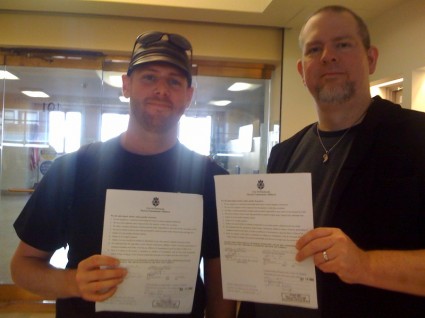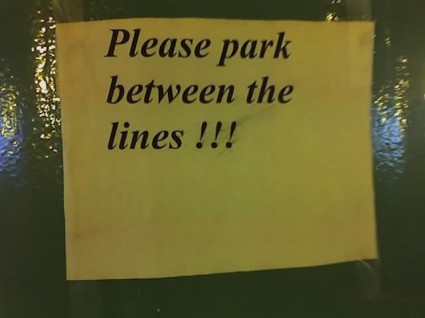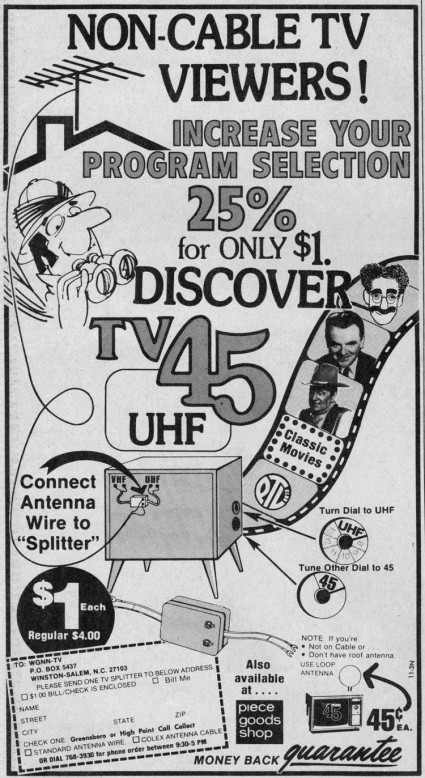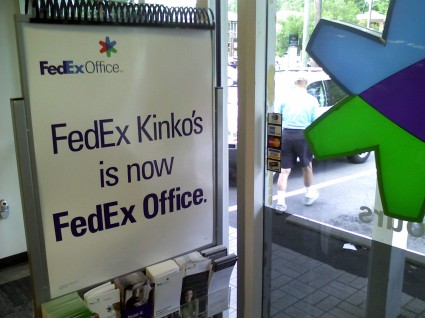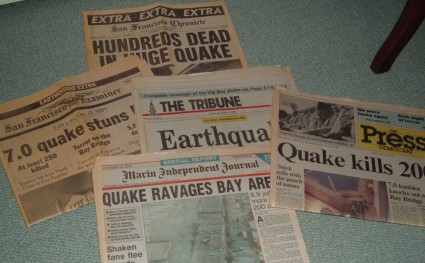I went to a Christian elementary school and it made me an atheist.
OK, that’s not entirely true, but it is where the seeds were planted. I came of age just as crosstown busing arrived in Greensboro NC. Whether it’s true or not, I prefer to believe that my parents were less worried about integration than about the specific school I was going to be integrated into. Just like many parents of that era around these parts, they promptly shipped me off to this institute of lower learning. Most of the “Christian schools” that spouted in the early 1970s claimed not to be segregated, at least not officially, but none of them had black students, and I assure you there was no outreach to the black community. Interestingly enough, my parents were (and are) not terribly religious. They’re vaguely Christian, and my mom would occasionally decide to take in a Sunday service once in a great while, but I can’t recall ever hearing my father discuss religion at all. Anyway, it’s safe to assume that they sent me to Vandalia Christian for the small class sizes and the education rather than for that whole “god thing.”
In fact, I got a good primary education there. They were, as you might expect, strong on the basics. I read, I wrote, and I arithmeticed (artithmetized?). There were also Bible classes. I did well in the Bible classes. In fact, to this day, I stake my knowledge of the Bible against many of the most vocal members of the Christian right, who seem never to have read the damned thing. I have read it and I know what it says. And what it doesn’t say. But that’s another story.
Unfortunately, the folks at Vandalia Christian were also big on indoctrination. We went to “chapel” a few days a week, and prayed in class, as I recall, multiple times every day. The “chapel” sessions could be pretty intense. The whole school went together, grades 1-12, and the theology was sometimes a bit advanced for the youngsters. I very vividly remember those “personal decision” moments, or whatever they called them, where we all bowed out heads and closed our eyes and were supposed to raise our hands if we were unsure of our faith or weren’t completely committed to Jesus. Of course, kids being kids, you just knew everyone was peeking to see which poor hell-bound souls were raising their hands so they’d know who to stay away from later on the playground.
Hell was big at Vandalia Christian. I remember once in chapel they showed us a movie called The Burning Hell. It was terrifying — too terrifying, some (like my mom, who did) might say, for seven- and eight-year-olds. it had the maggots and the pit of fire and everything hell offered to the young sinner. Apparently, pretty much everything could get you there, too, wretched individual that you were. Everything was a sin: dancing, going to the movies, having long hair (if you were a boy), wearing skirts that were too short (if you were a girl or a boy, presumably), questioning any aspect of God’s law as imparted to the right reverend Oates, complaining about the microwave sandwiches that constituted the “hot lunch” program, etc. And if it weren’t rough enough that everything short of breathing could send you straight to the fiery eternity, you were also told that even thinking about doing bad things was a sin. I used to lie awake nights contemplating unspeakable evil (ah, how I coveted Converse All-Stars and “Dark Shadows” comic books) and praying for forgiveness, especially as I got closer to puberty and comic books were the least of my worries.
Of course, realizing that I was eight years old and not quite ready to deal with the stress of such lofty metaphysical questions, my mom and dad told me to take most of what the folks at Vandalia Christian said with a grain of salt. And I really love them for that. Separating the truth from the bullshit (OK, it was mostly bullshit) was difficult, but it taught me valuable critical thinking skills at a very young age, and I’ve been skeptical of any sort of dogma ever since. I’m sure critical thinking skills were exactly what Reverend Oates and company were trying to avoid, but they blew it in my case. I will admit, though, that I was rather devout (and probably very irritating) at about age ten. Imagine that: a ten-year-old fundamentalist walking around damning to hell every heathen I met, which, of course, meant almost everyone I met. Is that sad, or what?
Second in importance to to fearing God (“you should fear him, but never be afraid of him”, whatever the hell that’s supposed to mean) was patriotism, apparently a uniquely Christian trait. We pledged allegiance to the American flag and to the Christian flag every morning. We used civil defense manuals in health class so we’d know how to care for each other when the Russians launched the inevitable nuclear attack. Gender roles, as you might guess, were absolutely rigid–pun intended. Boys were to excel at sports “to the glory of God” and to do any less was an insult to his holy name. Girls had options; they were allowed not to play sports, although they could do so if they chose to and were willing to wear knee-length shorts. Mainly, though, they were expected to be supportive cheerleaders who would grow into supportive housewives.
By age twelve, I’d had enough. My mom and dad had considered moving me back into public school the year before. We waited until the eighth grade, though, so the transaction could be even more awkward due to my late arrival in junior high. To say that I had a hard time fitting in would be an understatement, but I was used to it. I’d never fit in at Vandalia Christian, either. The folks there had only one social skills textbook and it didn’t allow for anyone who might be a little marginal.
I’d already pretty much given up on going to church at this point, and after a while, my mom stopped bothering to wake me up on Sunday to ask me if I wanted to go. The only religion I got was when I spent the occasional Saturday night at my grandmother’s house and went to her church (the Salvation Army, as it happens, but that’s a whole other story, too). Despite this, I still assumed I was a Christian. I prayed (usually to ask forgiveness for lusting after other boys) and I believed in God. I didn’t make a big deal of it, though, and the fundamentalist part had pretty much worn off.
There was no real moment of clarity for me, no specific time when I realized there was no God. I remember spending some time, maybe in high school, trying to reconcile the idea of loving and respecting some omniscient supreme being who apparently created the whole world just as sort of a little game (“Woo hoo. Let’s see who gets to go to hell and who gets to go to heaven.”) God started to seem awfully passive-aggressive to me, and also rather manipulative. Christianity struck me as a big game of chance: as long as you repent your sins before you die, even if you only make it by a few seconds, you go to heaven, no matter what you’ve done. Otherwise, you’re screwed. I didn’t much care for the odds, and preferred the concept of accountability. Again, these were not things I really thought about very often; I don’t consider myself a “spiritual” person in any way. Eventually, I just realized the whole thing was over for me, sort of like drinking, or San Francisco, or any other unsatisfying relationship.
I never lost any sleep over losing my religion. It just happened. And now that it has, I didn’t feel any antipathy toward people who do have more of a spiritual orientation, not do I operate under the assumption that all Christians are like the wackos I dealt with at Vandalia Christian (toward whom, I must admit feeling at least some antipathy). It’s just not for me. And I’m comfortable with that.
Ever so slightly inspired by…


